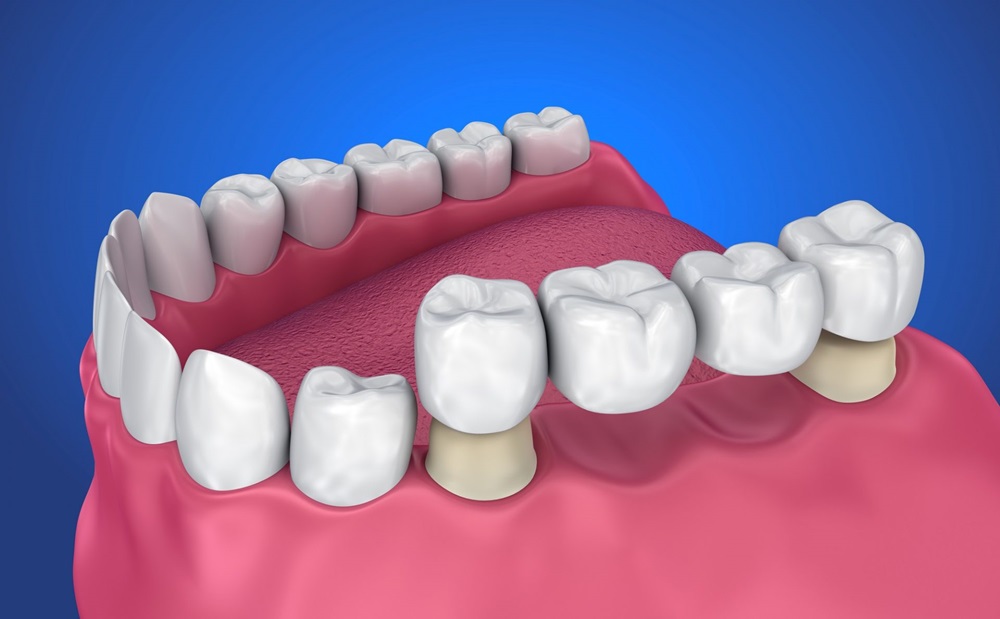Missing teeth can be a real hassle, affecting not only your smile but also your ability to chew and speak properly. Thankfully, considering dental bridges near you offers a solution to this problem by literally bridging the gap between your teeth. But just how many missing teeth can a dental bridge cover? Let’s delve into this topic and find out.
Understanding Dental Bridges:
Before we discuss the specifics, let’s understand dental bridges. Dental bridges are like custom-made bridges for your teeth. They replace missing teeth with artificial ones that look and work like real ones. They’re made to fit your mouth perfectly so you can smile and chew comfortably.
Types of Dental Bridges
- Traditional bridges: This is the most common type of bridge that involves securing one or more points in place with dental crowns on the neighbouring natural teeth.
- Cantilever bridges: When there’s only one adjacent tooth available for support, a cantilever bridge may be employed. It functions similarly to traditional bridges but depends on support from just one side.
- Maryland bonded bridges: Also known as resin-bonded bridges, these are ideal for replacing missing front teeth. They use metal or porcelain wings bonded to the adjacent teeth for support without the need for crowns.
How Many Missing Teeth Can a Bridge Cover?
Now, let’s address the burning question: how many missing teeth can a bridge cover? The answer depends on various factors, including the location of the missing teeth, the health of the surrounding teeth and gums, and the type of bridge used.
- Single tooth replacement: If you have just one missing tooth, a single pontic can be supported by two dental crowns on the adjacent natural teeth, effectively covering the gap.
- Multiple teeth replacement: In cases where multiple adjacent teeth are missing, a dental implant bridge can still be used to restore your smile. Depending on the number and location of missing teeth, your dentist may recommend a larger bridge or a combination of bridges to fill the gaps.
Factors to Consider
Before getting a bridge tooth replacement, there are several factors to consider. These include the health of the surrounding teeth, the cost of the procedure, and the long-term maintenance required. It’s important to discuss these factors with your dentist to determine if a bridge is the right option for you.
Consultation with a Dentist
Ultimately, the best way to determine how many missing teeth a bridge can cover is to consult with a qualified dentist. During a dental examination, the dentist will assess the patient’s oral health, discuss their goals and preferences, and recommend the most appropriate treatment plan.
Benefits of Dental Bridges
- Restored function: Bridges allow you to chew and speak properly, improving your overall quality of life.
- Improved appearance: By filling in gaps and restoring the shape of your smile, bridges enhance your facial aesthetics and boost your confidence.
- Preservation of oral health: Bridges prevent the remaining teeth from shifting out of position and maintain the integrity of your bite.
In conclusion, dental bridges are a reliable solution for replacing missing teeth and restoring your smile. Whether you have one missing tooth or several, a bridge can help you regain function and confidence. If you’re considering dental bridges, consult with a qualified dentist to determine the best option for your unique needs.
Want a Solution for Your Solution to Missing Teeth?
At Torrens Dental Care, we understand the importance of a healthy and beautiful smile. Our team of experienced dentist in Naples is dedicated to providing personalized care to help you achieve optimal oral health. From routine cleanings to advanced restorative procedures like dental bridges, we offer a wide range of services to meet your needs.
